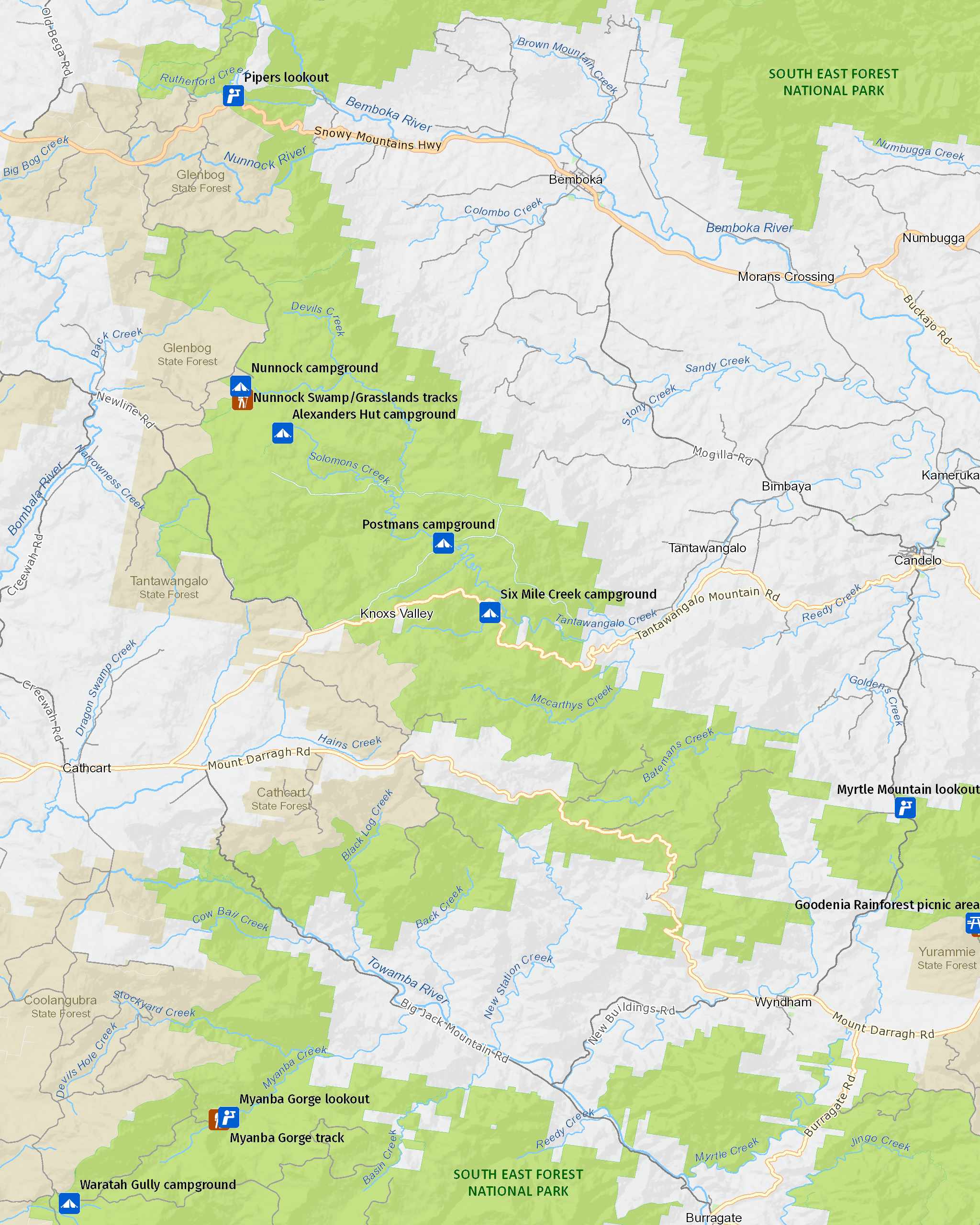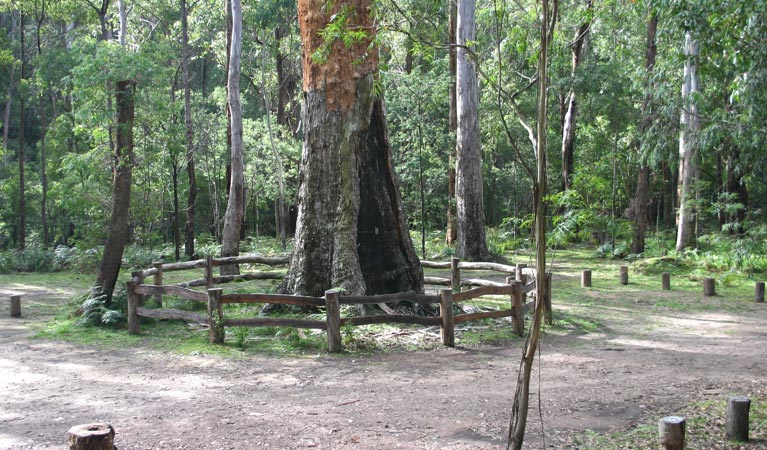Six Mile Creek campground
Overview
The charming Six Mile Creek campground in South East Forest National Park on the south coast offers opportunities for bushwalking, swimming, scenic drives and barbecues.
| Number of campsites | 6 |
|---|---|
| Camping type | Tent, Camper trailer site, Camping beside my vehicle |
| Facilities | Toilets, unpowered sites, picnic tables, barbecue facilities |
| What to bring | Drinking water, cooking water, firewood |
| Price | There are no camping fees at this campground but a $6 booking fee applies. |
| Bookings | Book up to 12 people or 2 sites online. |
| Group bookings | School groups and Park Eco Pass holders can make a group booking enquiry. |
Six Mile Creek campground is on the smaller side, featuring 6 campsites nestled amongst wet eucalypt forest. You can camp out in your tent or bring a camper trailer, there’s room for both at this free campground.
Follow the 300m Six Mile Creek walk – it leads you to a viewing platform overlooking cascading waters on their way to Tantawangalo Creek. Take a barbecue pack if you'd like to stop for lunch.
If you’re camping out on the first Sunday of the month, why not pop over to the riverside Candelo Market? You’ll find something fascinating or flavourful among the many stalls.
When you’re on the road to or from Six Mile Creek campground, take in the history of the area – the original Tantawangalo Mountain Road leading to this site was forged around 1860.
Map

Map legend

Local alerts
For the latest updates on fires, closures and other alerts in this area, see https://www.nationalparks.nsw.gov.au/camping-and-accommodation/campgrounds/six-mile-creek-campground/local-alerts
Bookings
- National Parks Contact Centre
- 7am to 7pm daily
- 1300 072 757 (13000 PARKS) for the cost of a local call within Australia excluding mobiles
- parks.info@environment.nsw.gov.au
Operated by
- Bombala office
- Monday to Friday, 8.30am to 4pm.
- 02 6458 5900
- npws.sapphirecoast@environment.nsw.gov.au
- 153 Maybe Street, Bombala NSW 2632
Visitor info
All the practical information you need to know about Six Mile Creek campground.
Maps and downloads
Bookings
- National Parks Contact Centre
- 7am to 7pm daily
- 1300 072 757 (13000 PARKS) for the cost of a local call within Australia excluding mobiles
- parks.info@environment.nsw.gov.au
Operated by
- Bombala office
- Monday to Friday, 8.30am to 4pm.
- 02 6458 5900
- npws.sapphirecoast@environment.nsw.gov.au
- 153 Maybe Street, Bombala NSW 2632

